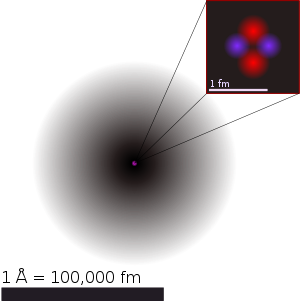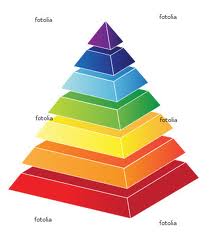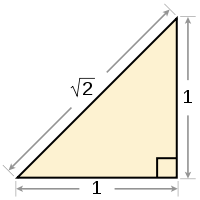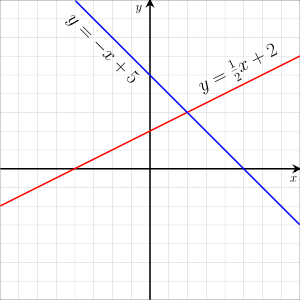Algebra.
copyright
What is algebra?

Don't take any notice of the patronising tone of the language used in the following. There is nothing to be ashamed about if you don't know something and want to find the answer. People who know all about mathematics don't necessarily know everything about everything else. You only need to know enough to achieve your goal.
Elementary alegbra
Elementary algebra is a fundamental and relatively basic form of algebra taught to students who are presumed to have little or no formal knowledge of mathematics beyond arithmetic. It is typically taught in secondary school under the term algebra. The major difference between algebra and arithmetic is the inclusion of variables. While in arithmetic only numbers and their arithmetical operations (such as +, −, ×, ÷) occur, in algebra, one also uses variables such as x and y, or a and b to replace numbers.
Equations can be classified according to the types of operations and quantities involved. Important types include:
- An algebraic equation is an equation involving only algebraic expressions in the unknowns. These are further classified by degree.
- A linear equation is algebraic equation of degree one.
- A polynomial equation is an equation in which a polynomial is set equal to another polynomial.
- A transcendental equation is an equation involving a transcendental function of one of its variables.
- A functional equation is an equation in which the unknowns are functions rather than simple quantities.
- A differential equation is an equation involving derivatives.
- An integral equation is an equation involving integrals.
- A Diophantine equation is an equation where the unknowns are required to be integers.
An equation is a mathematical statement that asserts the equality of two expressions.[1] In modern notation, this is written by placing the expressions on either side of an equals sign (=), for example
asserts that x+3 is equal to 5. The = symbol was invented by Robert Recorde (1510–1558), who considered that nothing could be more equal than parallel straight lines with the same length.
Algebraic equation
In mathematics, an algebraic equation, also called polynomial equation over a given field is an equation of the form
- P = Q
where P and Q are (possibly multivariate) polynomials over that field. For example
is an algebraic equation over the rationals.
Two equations are equivalent if they have the same set of solutions. In particular the equation P = Q is equivalent with P − Q = 0. It follows that the study of algebraic equations is equivalent to the study of polynomials.
Linear Equation
A linear equation is an algebraic equation in which each term is either a constant or the product of a constant and (the first power of) a single variable.
Linear equations can have one or more variables. Linear equations occur with great regularity in applied mathematics. While they arise quite naturally when modeling many phenomena, they are particularly useful since many non-linear equations may be reduced to linear equations by assuming that quantities of interest vary to only a small extent from some "background" state.

Diag 5 Centre of a Helium nucleus.




Is it valid to say, that if you wish to remove time from an equation, you must place equal values for time on both sides of the = sign?
Eg. E=m x speed of light squared.
E= Energy
m = mass of any object
Mass x square of speed of light = Energy
Speed of light = number of km travelled by light in 1 second.
How does mass relate to the speed of light?
Does multiplying the speed of light by itself give a value for energy? If energy = light squared is it because all matter is light?
If all matter is not light, how much extra energy are we talking about? Is it light cubed?
Is it light squared plus light squared (double the amount?
Yes it is. To balance a force with an equal force you must simply double the force.
So what is the next step?
Obviously you must come up with a figure for the mass of a photon. before you can double the spped of a particle or a force, even if it is just a wave mocing at right angles to the direction of the light, presuming light is moving in waves (an we can calculate the speed of light from that), then you must compare that mas to the mass of something else, say the mass of an electron. What if there is no mass of a single electron? What if the mass if an electron is within a large range. Can we compare it to the charge of a single proton, or a single nucleus, say an alpha particle?
If we say that the mas of an electron is 4 times x, and the mass of a photon is 100 times y, what values can we have for x? What is the range of values?
How do we calculate the amount of light we get from an electron, or a given quantity of electricity. There are several ways to get light, photons, from an electric current, but is one more efficient than another? How do we quantify them?

Graph sample of linear equations.
So what is the next step?
Obviously you must come up with a figure for the mass of a photon. before you can double the spped of a particle or a force, even if it is just a wave mocing at right angles to the direction of the light, presuming light is moving in waves (an we can calculate the speed of light from that), then you must compare that mas to the mass of something else, say the mass of an electron. What if there is no mass of a single electron? What if the mass if an electron is within a large range. Can we compare it to the charge of a single proton, or a single nucleus, say an alpha particle?
If we say that the mas of an electron is 4 times x, and the mass of a photon is 100 times y, what values can we have for x? What is the range of values?
How do we calculate the amount of light we get from an electron, or a given quantity of electricity. There are several ways to get light, photons, from an electric current, but is one more efficient than another? How do we quantify them?

Helium (proton)
Helium------------------------------Helium
Helium----------------------
Helium-----------------------
Helium-----------------------------
Hydrogen (proton)
Hydrogen------------------------------
Hydrogen-----------------------------
Hydrogen-----------------------------
Hydrogen-----------------------------
Hydrogen------------------------------

